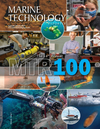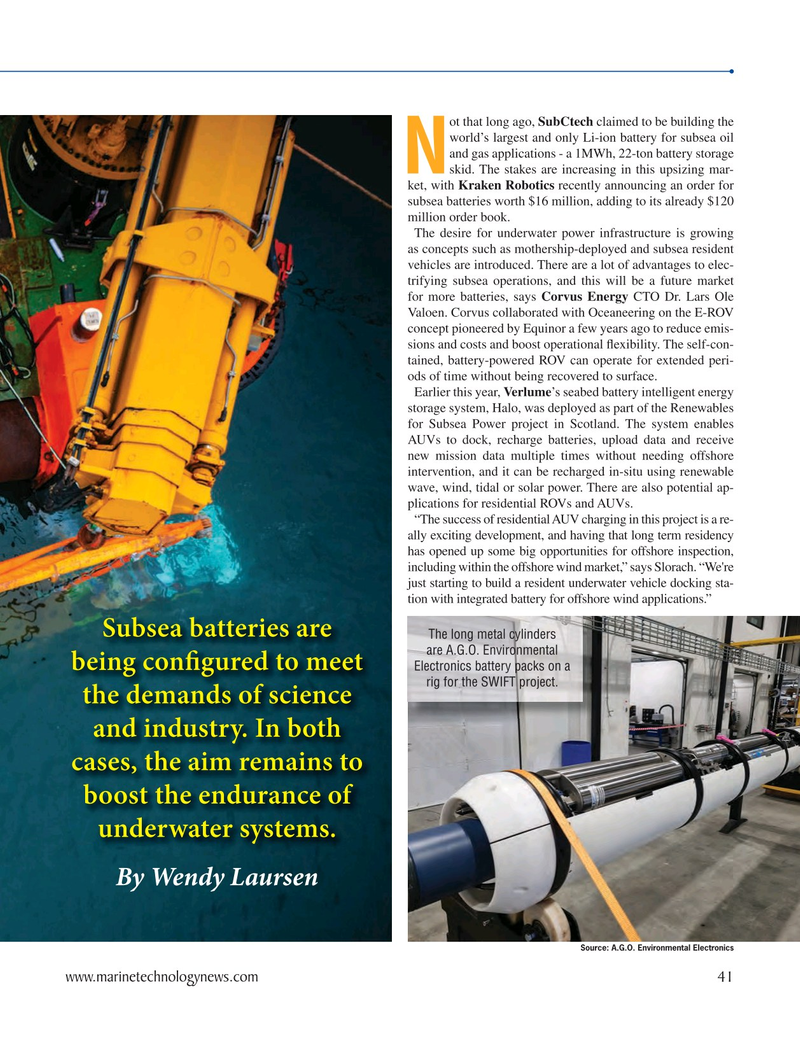
Page 41: of Marine Technology Magazine (September 2023)
Read this page in Pdf, Flash or Html5 edition of September 2023 Marine Technology Magazine
ot that long ago, SubCtech claimed to be building the world’s largest and only Li-ion battery for subsea oil and gas applications - a 1MWh, 22-ton battery storage
Nskid. The stakes are increasing in this upsizing mar- ket, with Kraken Robotics recently announcing an order for subsea batteries worth $16 million, adding to its already $120 million order book.
The desire for underwater power infrastructure is growing as concepts such as mothership-deployed and subsea resident vehicles are introduced. There are a lot of advantages to elec- trifying subsea operations, and this will be a future market for more batteries, says Corvus Energy CTO Dr. Lars Ole
Valoen. Corvus collaborated with Oceaneering on the E-ROV concept pioneered by Equinor a few years ago to reduce emis- sions and costs and boost operational ? exibility. The self-con- tained, battery-powered ROV can operate for extended peri- ods of time without being recovered to surface.
Earlier this year, Verlume’s seabed battery intelligent energy storage system, Halo, was deployed as part of the Renewables for Subsea Power project in Scotland. The system enables
AUVs to dock, recharge batteries, upload data and receive new mission data multiple times without needing offshore intervention, and it can be recharged in-situ using renewable wave, wind, tidal or solar power. There are also potential ap- plications for residential ROVs and AUVs.
“The success of residential AUV charging in this project is a re- ally exciting development, and having that long term residency has opened up some big opportunities for offshore inspection, including within the offshore wind market,” says Slorach. “We're just starting to build a resident underwater vehicle docking sta- tion with integrated battery for offshore wind applications.”
Subsea batteries are
The long metal cylinders are A.G.O. Environmental being conf gured to meet
Electronics battery packs on a rig for the SWIFT project.
the demands of science and industry. In both cases, the aim remains to boost the endurance of underwater systems.
By Wendy Laursen
Source: A.G.O. Environmental Electronics www.marinetechnologynews.com 41
MTR #7 (34-49).indd 41 10/2/2023 2:41:35 PM

 40
40

 42
42
